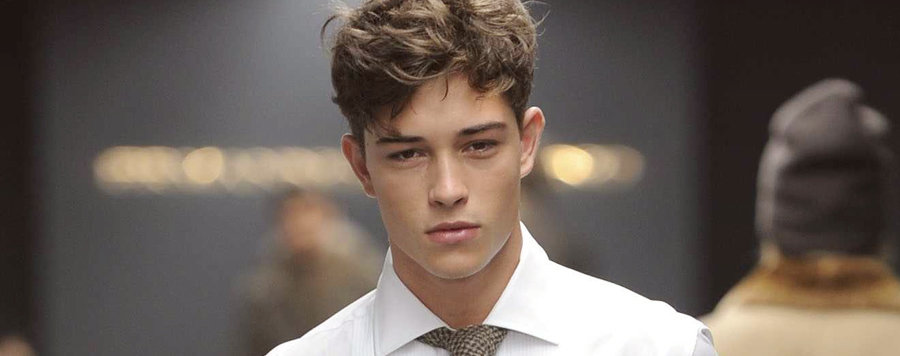
What is Mewing?
Mewing is a long-term technique for improving your facial structure. It’s one of the most important things you can do to have a chiseled jawline, prominent cheekbones, cheek hollows, and attain the overall model look.
I have to admit, the first time I heard this years ago, I thought it was the dumbest thing ever and tantamount to nonsense. I mean, it’s all genetics! Changing your face or bone structure is ridiculous. This attitude stems from the fact that people think of bones only in the context of fossils, hardened, immovable objects. But this isn’t how bones exist in our bodies. Bones have a vascular supply and help produce new cells out of bone marrow.
Bones in adults are still malleable, and they are continually undergoing bone remodeling. Babies have a 100% bone remodeling rate, and in adults, it’s about 10%. It’s still within the realm of possibility to get positive, permanent changes to your bone structure. If you don’t believe that the bones change, just look at the differences between the youthful vs. aging skull (Eduardo et al., 2017):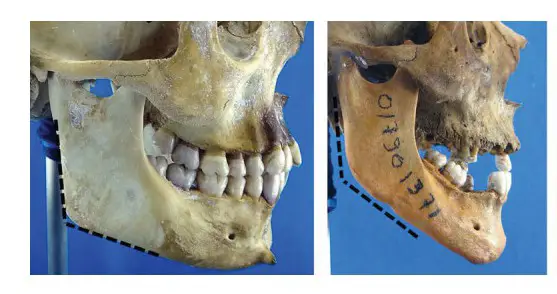
However, it takes lots of work and dedication to get your bones to do what you want. It also gets harder with age. After 25, it’s still possible but will be an uphill battle. As a prehistoric human, your life at 25 would have been more than halfway over, and things would have started to slow down. This doesn’t mean you shouldn’t be mewing, however, as bones can and will get worse with age.
One of the most famous examples is this progress report posted by a lookism user:
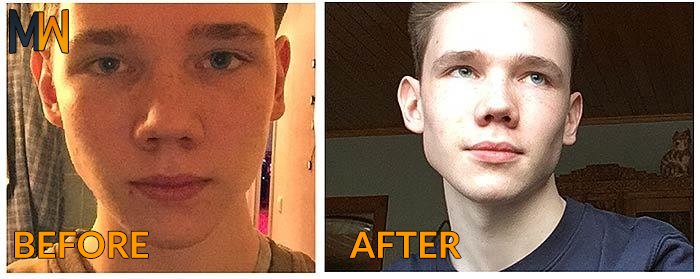
YouTuber AstroSky also changed his face over several years through dedication to mewing:

Here is a 2-year progress photo from a Reddit user:
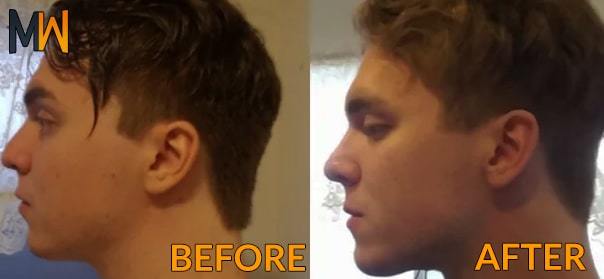
Because mewing is a relatively new concept that challenges the traditional medical discipline of orthodontics, not much research has been done directly on mewing itself. Though Dr. Mew’s results with children speak for themselves, only he and a few other practitioners are actually gathering data surrounding this issue. However, there is plenty of scientific evidence for the core principles behind mewing, namely that tongue posture can guide growth, facial bones can change in adults, mouth breathing leads to malocclusion, and more. Click here to view a compilation of scientific studies related to mewing.
And if you still doubt that mewing works, check out more mewing before/after photos.
Mewing is especially effective at younger ages where the bones are more pliable than in adults and are still growing. In kids, the sutures of the face have not fused yet, which allows postural changes to move the bones around like jello. Treating craniofacial problems with this method is orthotropics.
These two kids below received a training device in their mouth that forced them to keep their tongue in the correct position. This saved them from expensive orthodontic treatments in the future and improved the shape of their face:

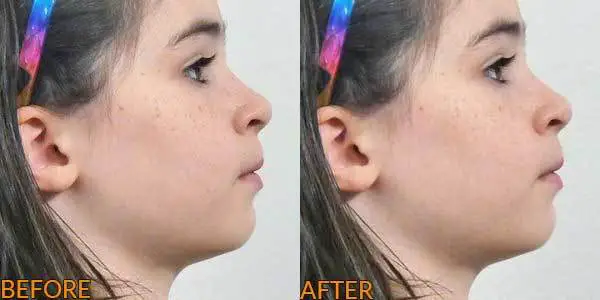
Also, mewing has actual health benefits that could save your life. As your face elongates from improper posture, your tongue slips into your throat, and you’re more likely to get sleep apnea. Learning to breathe through your nose and mewing correctly can help prevent sleep apnea, where you do not absorb enough oxygen during sleep. Sleep apnea also increases the risk of cardiovascular disease, according to the Sleep Health Heart Study in 2001.
It doesn’t stop there. People who suffer from sleep apnea have a 2-3 times higher risk of stroke, according to a 2010 study from the American Journal of Respiratory Critical Care Medicine. They also face more than three times the risk of premature death.
An improperly shaped face will not function correctly. In addition to the sleep apnea, you’re more likely to:
- Snore
- Have less horizontal space for the teeth (eventually leading to crooked teeth)
- Suffer from a blocked nose
- Get hearing problems from blocked Eustachian tubes
- Receive less oxygen to your brain and have a lower IQ
Mouth breathing also leads to chronic stress. Mouth breathing is for stressful, high-demand situations, like chasing down prey or running away from a lion. You should not mouth breathe 24/7.
Many people over-complicate mewing and don’t understand the technique, but it’s actually quite simple. Doctors John and Mike Mew invented “mewing”. Check out their YouTube channel Orthotropics for videos discussing mewing and how it works.
Also, remember mewing is a long term strategy for optimizing your looks and health. It is not something you can do in a few months unless you’re very young. Get ready for it to take a literal/actual decade before you achieve terrific visible results. It will take consistent dedication every single day, especially if you’re over 25. You should have realistic expectations.
Remember also that mewing won’t make you look like someone else. While it will undoubtedly make you look better, your genetics are still your foundation.
If you’re questioning whether you should do this or not, the answer is a resounding yes. It takes no time out of your day. It’s merely a healthy posture. Your face changes as you age, whether you like it or not. People rarely become more attractive with age. If anything, you should be doing this to make sure you don’t get uglier with age.
Forward growth is essentially a pillar of attractiveness. The following Looks Theory video explains just how much of a vital component it is to an attractive face:
If you’re interested in determining how forward grown your face is, our advanced and premium custom facial reports determine the forward growth of both of your jaws via several calculations.
How Does Mewing Work?
To understand how mewing changes your bones, it’s necessary to realize that bone structure isn’t static in adults. While bones don’t change overnight, they definitely warp when exposed to consistent pressures for long durations. The downside for us is that this means successful mewing takes a long time.
In patients that have had strokes and lost the ability to contract muscles on their face, one side of the face has a completely different bone structure due to the muscles being unable to contract.
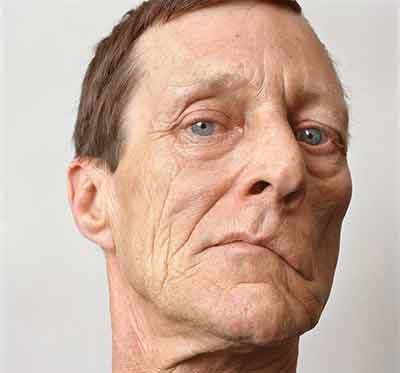
In ALS or Lou Gehrig’s disease, such as in the case of Stephen Hawking, the condition clearly warped the bones of the skull. But ALS is a disease of the muscles, not bones.

Muscular dystrophy, another disease of the muscles, also warps the facial bones. Note how the picture on the right shows a recessed maxilla and an outline of where it should be in a completely healthy face.
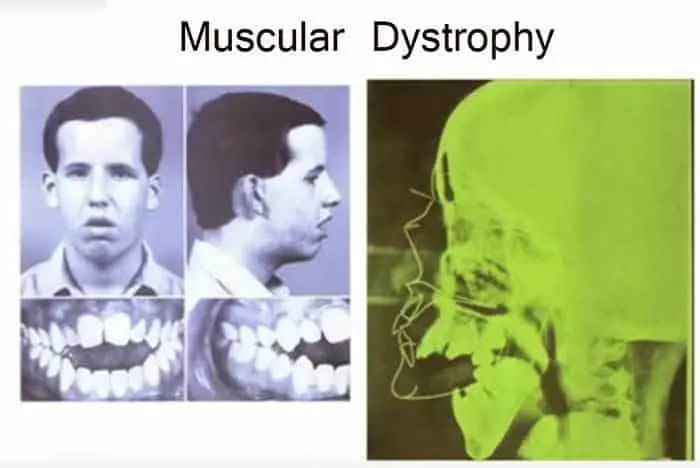
Again, the moral of the story is this:
Small Force & Long Duration > Strong Force & Shorter Duration
Think of a tree that has grown around a rock, fence, or other obstruction. It does so because the force exerted by the fence is always constant. It’s the small, consistent changes that add up. If you press too hard with your tongue and your tongue gets too tired to stay up on the roof of your mouth because it’s tired, you’ve done nothing but waste time.
But what about a Strong Force + Long Duration? The jury remains out on that one. Biomechanics are different from normal mechanics. It’s possible that the harder you press, the more the bone hardens and adapts to prevent future injuries. There might be a threshold of force that could kill your mewing gains should you exceed it.
Bone Remodeling vs. Sutural Growth
There are two primary methods by which bones can change in adults: bone remodeling and sutural growth.
Bone Remodeling
Bone remodeling involves the work of two specialized cells: osteoblasts and osteoclasts. There are three stages:
- Resorption. Osteoclasts break down existing bone.
- Reversal. Osteoblasts appear on the bone surface.
- Formation. Osteoblasts begin building new bone.
This process is much slower in adults than in newborns. However, 10% of the bone is remodeled per year. With mewing, this means small gradual changes that take a long time.
For more info on optimizing bone remodeling, check out our article on how to speed up bone remodeling.
Sutural Growth
There are multiple sutures in the skull which serve as growth centers for newborns and during puberty. In kids, these sutures are like jello. As a result, changing bone structure in kids is very easy.
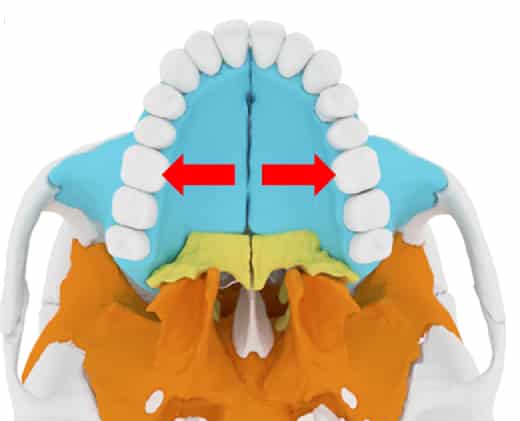
The midpalatal suture along the upper palate, for example, is responsible for the palatal expansion and facial width. Many people with poor facial development can’t mew appropriately due to narrow palates. In these cases, the Maxillary Skeletal Expander device (MSE) can split the midpalatal suture. This causes a surge of new bone growth.
Sutural growth pretty much stops after the age of 17, however. Without resorting to invasive methods such as MSE, your body is essentially done growing at the suture sites, though some might still happen.
So what does this mean for you? Dr. Mew says adults shouldn’t concern themselves with whether their growth is from bone remodeling or sutural growth. Just keep mewing. If you can’t mew due to tongue space, then consider expansion with MSE.
Mewing Facial Changes
Now, what exactly does mewing do for your skull? To understand, first, note the bones of the skull:
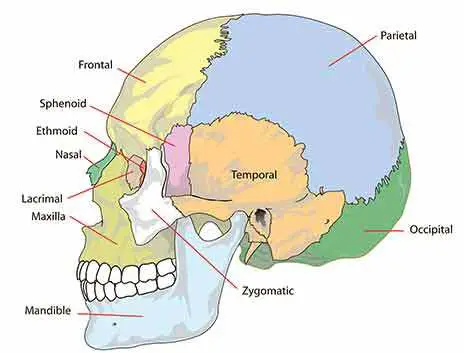
The mandible is your jaw, and the maxilla is basically your midface. When mouth breathing elongates your maxilla, you wind up with a long unattractive face.
So now mewing comes to the rescue. After performing it consistently for years, it causes some of the following basic bone remodelings:
- Rotating the maxilla, aka. the midface up and forward
- Rotating and growing the mandible, which follows the maxilla
- Augmenting the zygomatic bones
This is what mewing should do to the face:
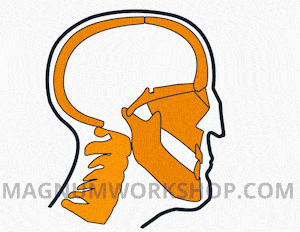
Essentially, it completely reverses craniofacial dystrophy.
The hyoid bone also moves up from continued tongue pressure, making your jawline stand out.

Mewing leads to a more attractive face because you’ll have a more square prominent jaw, visible cheek hollows, eye support, and prominent cheekbones. When your midface moves upward & forward, your cheekbones also move apart from each other and get wider. This creates a larger space under them, which leads to hollow cheeks provided you have low enough body fat. This also does several things to your eye area and primarily makes it look more attractive by decreasing your orbital height, increasing your canthal tilt, and making the eyes more deep-set in the back of your skull (Hunter Eyes).
For more information about what exactly mewing does and how to look for changes in before/after photos, see our article on analyzing mewing results photos.
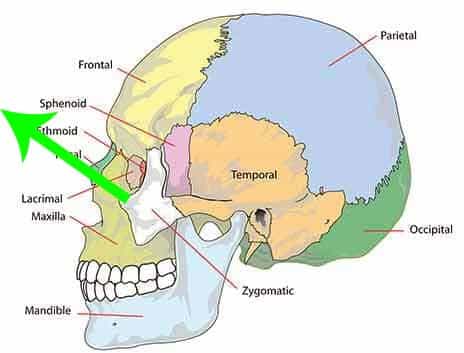
The above picture describes both the optimal direction for facial growth and the direction you should be pushing with your tongue.

The above picture describes the forces generated by mewing. The first skull shows an upward force that comes from the tongue and having your teeth together. This force will cause your cheekbones to bulge out.
Each force has an equal and opposite reaction. The second skull demonstrates this force. The upwards pressure by your tongue will create a downward force on your ramus, increasing your gonial angle. Also, the antagonist muscles to your tongue are activated, namely the masseters and the hyoid/neck muscles. The masseters will cause your jaw to get bigger, and your gonial angle to increase with time. But it won’t be a massive amount of growth, especially when compared to chewing gum.
Since the TMJ complex and your teeth lock your upper and lower jaws together, your lower jaw will go along for the ride and move forward along with your maxilla.
How to Mew Correctly
- Straighten your back, stop hunching and straighten your neck.
- Close your lips. This will create a seal and prevents mouth breathing.
- Have your teeth touching. Don’t quite clench your teeth, but make sure your lower jaw is supporting your maxilla.
- Then, rest your tongue on the roof of your mouth, not just the tip of the tongue. Press your entire tongue on the roof of your mouth. Cover as much surface area of your upper palate as you can. Focus on the back by your wisdom teeth. Since the roof of the mouth is curved, you won’t be able to get it completely flat. So just contour your tongue to cover as much surface area of the roof of your mouth as you can. Again, focus on making sure the back third of your tongue is on the roof of your mouth.
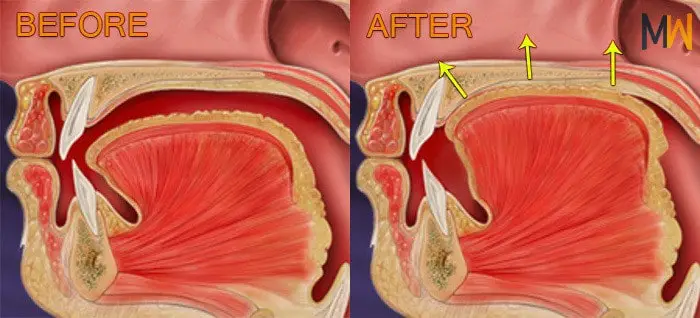
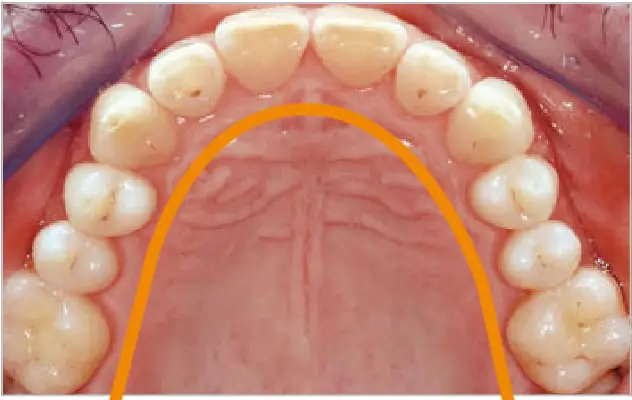
- Contract your muscles under your chin to help force your tongue onto the roof of your mouth.
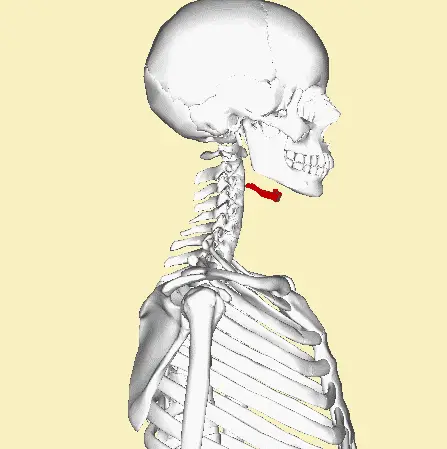
- Hold this posture for as long of a duration as you can. Remind yourself to do it consistently throughout the day. Keep your mouth closed and breathe through your nose the entire time.
Mewing Tips
Just practicing proper tongue posture will get you on the right track. However, there are still several more things you should pay attention to if you truly want to maximize your results.
- You’ll know you’re mewing correctly when your hyoid bone moves upward and inward. Watch yourself mew in a side profile and note your submental-cervical angle. Your hyoid bone should be high and tight.
- If you’re having trouble applying the technique, try starting from the very back of your tongue and going forwards. Press as hard as you can on the back third. Then slowly get the middle of your tongue on the roof of your mouth. Finally, focus on the tip of the tongue, which you rest just before your front teeth.
- Your tongue does not detach from the floor of your mouth in the back, but this is normal. If you’re having trouble getting the back third of your tongue up, focus on your hyoid muscles under your jaw and use them to push the back third of your tongue up.
- Remember that it’s key to keep your teeth together because your mandible should naturally support your maxilla. If you have your tongue on the roof of your mouth, but don’t have your jaw clenched, you’re not mewing. Your midface is still lacking support, and your mandible is still dropping if your teeth aren’t slightly touching.
- Never forget to remember to press with the back third of your tongue. This is going to feel uncomfortable at first, and it means you’re doing it right. Getting the back third of the tongue up is the hardest part of mewing correctly. Some people feel like mewing cuts off their airway. This is normal. Focus on the posterior third of your tongue as much as you can.
- Do not press super hard. The changes in bone structure that come from mewing come from exerting a little pressure over a long time, not exerting an intense pressure over a short time. The bones will not change from merely pressing hard against the roof of your mouth for an hour. It’s far better to hold the exercise for 20 minutes than to push really hard for 5 minutes. The last thing you want to do is wear yourself out from pressing hard and have periods where your tongue isn’t up there.
- Do not push super hard on your teeth themselves with your tongue. Sometimes it is normal for the tongue to look like this after mewing:
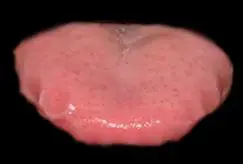
But don’t take this too far. You might be trying to expand your palate, but you’re not trying to mess up your teeth. - If you don’t have enough room on your upper palate to place your tongue, devices such as an MSE (Maxillary Skeletal Expander) will literally move your teeth apart and stretch out your maxilla. This is important, especially if you have trouble mewing without pressing on your teeth. With an extremely narrow palate, mewing won’t help you, primarily since you can’t utilize mewing to its full potential.
- The lady below used a biobloc (a palate expander), which illustrates the importance of intermolar width and palatal expansion:
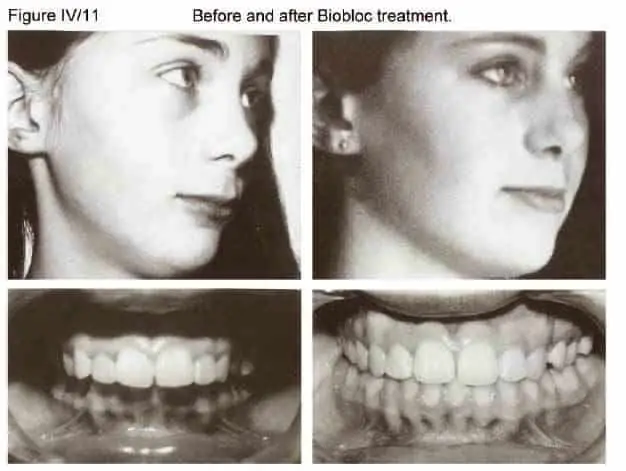
- It’s training yourself to hold your tongue in the proper position that’s going to change your face over a long period. The benchmark to know if you’re correctly mewing is if you find your tongue resting on the roof of your mouth while you’re not thinking about it, or when you wake up. It should be completely automatic. Until then, keep practicing, and don’t waste all your effort jamming it up on the roof of the mouth as hard as you can.
- Duration is more important than intensity. If you find that you’re always pressing TOO hard, then cut the amount of force you’re applying by half. And then do it again until your tongue is just gently resting on the roof of your mouth.
- My favorite tip for actually getting success with mewing is to have inanimate objects as memory triggers. For example, think of something you do quite often, like opening a door or checking your cell phone. The doorknob or your cell phone could be a trigger to perform mewing and fix your posture.
- Even if you only remember it for 5 minutes after seeing the object, the frequency of these events will ensure that you’re doing it throughout your whole day, consistently. And consistency is what’s important if you want to see results. Try to mew 24/7. Breathing entirely through your nose should just be normal, and this should just be your new lifestyle. Remember, you’re literally getting uglier if you’re not doing this.
Mouth Breathing
Mouth breathing is the opposite of mewing. Since your mandible isn’t supporting your maxilla, both your mandible and maxilla move down, giving you a long face. Mouth breathing is going to get you further and further away from the ideal face. If you mouth breathe at night, get it handled. Consider buying a strap. If you have sinus/allergy issues, you need to stay on top of those at all times.
Look at the progression of facial changes that happen when you breathe through your mouth:
This kid had the potential to be attractive, but mouthbreathing really set him back.
Posture and orthotropic treatment fixed this girl’s face. Clearly, her facial development headed in the wrong direction.

The environment trumps genetics in this case. The “it’s all genetics” excuse doesn’t apply here.
You have to make sure that you don’t mouth breathe at night. People that sleep mostly on their backs tend to mouth breathe at night because the jaw just falls open due to gravity. Get a chin strap and sleep with it every single day for the rest of your life if you think this is happening to you.
Body Posture
Proper body posture is supremely important. It supports your mewing efforts, and you should dedicate a lot of time to posture work alone. The main reason is that when people crane their neck forward and look at books/cell-phones all day, the mouth naturally opens. It can sabotage your mewing efforts, and this can start from your pelvis or even your feet:
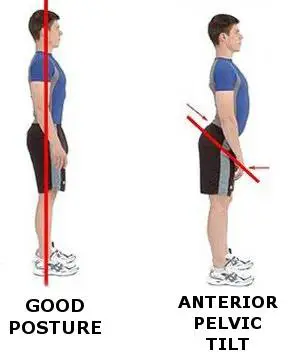
An anterior pelvic tilt or slumped shoulders will cause you to naturally stick your head out. When your head is too far forward, you will tend to open your mouth, drop your tongue, and you won’t have as much contact area on the posterior third of your mouth to mew with. That’s why some people can only mew properly by tucking their chin back.
Refer to this video for gym posture exercises:
Stand up straight, and do a Mckenzie Chin tuck whenever you can. This is directly combating that “nerd neck” we get from staring at cell phones. Here is a video explaining how the McKenzie chin tuck works:
Literally, bring your chin back, and hold it for an hour while you’re working on something at your house. It stretches the muscles in the back of your neck and improves your posture over time. It helps with mewing by giving you more space & leverage to push upwards on the back of your tongue. If you find that you have difficulty pushing up on the back third of your tongue and/or holding it, practice this as much as you can.
Notice how performing a chin tuck makes you mew automatically. This is why posture is essential. With perfect posture, you’ll be able to exert more force on your palate with less effort. Practice this one exercise as much as you can.
Proper Swallowing
Proper swallowing consists of using your masseter muscles, the muscles responsible for chewing hard foods, instead of your cheek muscles. Most people suck in their food and have an infantile swallowing technique. This sucks your teeth inwards. What you want to do instead is chew up the food as best you can and roll it up into a little ball. Then, use your tongue to sweep the bolus of food back into your throat. This also pushes up on your maxilla, which is what you should be doing anyway.
You’ll know you’re swallowing properly when the back third of your tongue jams up hard on your upper palate after the swallow.
Proper swallowing takes some practice, but if you keep doing it consistently instead of using your cheek muscles to swallow, you’ll atrophy those cheek muscles and achieve a hollowed cheek look. Here is Dr. Mew’s video on proper swallowing.
Basically, if you’re in doubt, just pay conscious attention to your buccinator muscles:
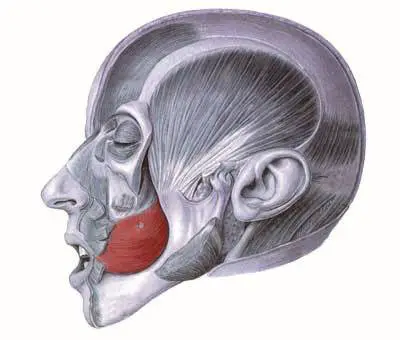
To get them to atrophy, you shouldn’t use them at all, for anything. Never suck on anything. Don’t swish food around in your mouth, don’t do anything with it. The only thing you’re allowed to do is chew up and down in the vertical plane using your masseter muscles.
Suction Hold (Advanced Technique)
After you’ve gotten used to keeping your tongue on the roof of your mouth 24/7 for several months, I recommend learning how to apply a suction hold. This will help you hold the position longer and with less effort. If you find that saliva keeps building up, that’s because you’re opening up the salivary glands, which will be less noticeable in time.
To do the suction hold first start mewing. Then when saliva builds up, use the tip of your tongue to perform a proper swallow. Just like above, without removing your tongue from the roof of your mouth, sweep the spit across your tongue and down into your gullet, like you would a piece of food. Eventually, this builds up a vacuum between your tongue and the roof of your mouth.
This is not an intraoral vacuum. Again, the vacuum is only between the roof of your mouth and the feeling part of your tongue. You still have to actively push upwards with the tongue, particularly the back third. The suction hold merely makes it easier. But only the front 2/3 of the tongue truly gets suctioned. That’s because the hard palate ends by the back of the tongue, and that point it’s mainly just soft tissue.
Gum Chewing
Ancient humans would work very hard to chew their food. The food itself was hard, and it was less calorie-dense. Like animals, we would grind down our teeth from so much chewing. With a modern diet full of carbs and soft foods, we don’t have to do that anymore. We don’t have to struggle just to get our nutrition, but our faces are literally melting as a result of this luxury. Look at this comparison of the wear and tear on teeth between ancient humans and modern humans.
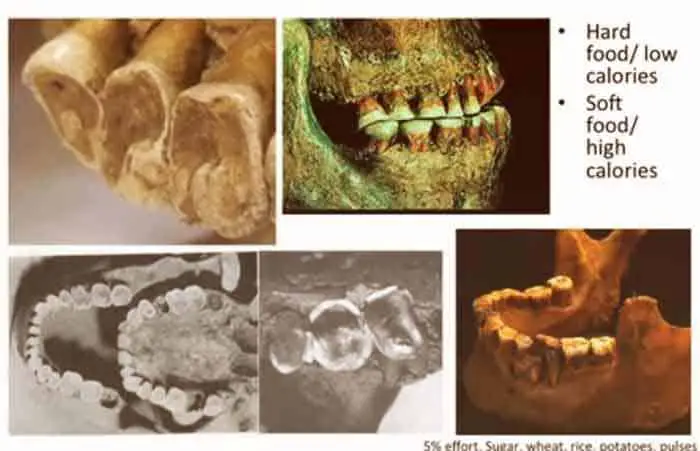
Luckily, we have chewing gum, which activates a bunch of muscles in your mouth that are key to developing a good facial structure. It’s also hard work, and it won’t wear down your teeth. Chewing gum will make your face more square instead of oval. There are two techniques for developing your face using chewing gum, and I recommend buying some falim gum or other sugar-free gum.
First, there’s “tongue chewing,” which is a technique that also pushes up on your maxilla. It’s exactly as it sounds: instead of using your teeth to chew on the piece of gum, push the gum up on the maxilla. You can do this with food as well. This helps with your mewing goals, obviously as you’re also creating upward and forward growth on the maxilla by pushing on it.
Secondly, and what you should focus on if you want a more prominent jaw, there’s “big bolus chewing,” which involves chewing gum with your teeth like usual, but moving the gum around your teeth from the left side to the right side repeatedly instead of keeping it in one place. It’s also done with multiple pieces of gum that form a large bolus (hence the name) so that you have an actual challenge.
I suggest Falim gum. It’s cheap, sugar-free, doesn’t taste great, but it’s much harder than ordinary gum. However, if you’re new to gum chewing, chew regular gum first for a few months before graduating to Falim gum. Beware that you don’t get TMJ. Start at 20 minutes per day, 5 days a week. Add 5 minutes each week, and your jaw will grow.
Hard Mewing (Advanced Technique)
Hard mewing refers to pressing your tongue on your upper palate with much more force than usual, to the point where you can feel pressure in your skull. Your tongue should be on the roof of your mouth 24/7, and you shouldn’t even think about hard mewing until you’ve got to that point. Most people don’t recommend hard mewing as it could potentially be dangerous and lead to asymmetries.
However, I am a proponent of it and try to spend at least part of my day hard mewing. While what we learned earlier holds true, that:
Small Force & Long Duration > Strong Force & Shorter Duration
It’s also true that bones respond to stress/trauma. Before and during puberty, your growth plates haven’t closed, and merely keeping your tongue on the roof of your mouth is enough to “guide” your facial growth. After puberty and well into our 20s, I believe you have to do something extra.
However, there are some caveats with hard mewing:
- You should feel pressure on your cheekbones and throughout your skull. But make sure the pressure you’re exerting is consistent and equal throughout every part of your mouth, or else you’ll be mewing yourself into facial asymmetry. I like to start off with the sides of my tongue first and then go inwards.
- If you hard mew so much that your tongue gets too tired to stay up on your palate 24/7, then it’s not worth doing.
Head/Skull Posture
Proper head posture consists essentially of looking down. This is an important part of mewing that people tend to neglect. The McKenzie chin tuck exercise aims to acclimate your skull to sit in the proper orientation. When you lift your head back, you’re tightening the muscles in the back of your skull and weakening the muscle around your forehead. This leads to the stereotypical witch skull in women or wimp skull in men.
You should not be walking around doing a McKenzie chin tuck. Instead, you should simply align your head to be looking downwards and straight ahead, as so:
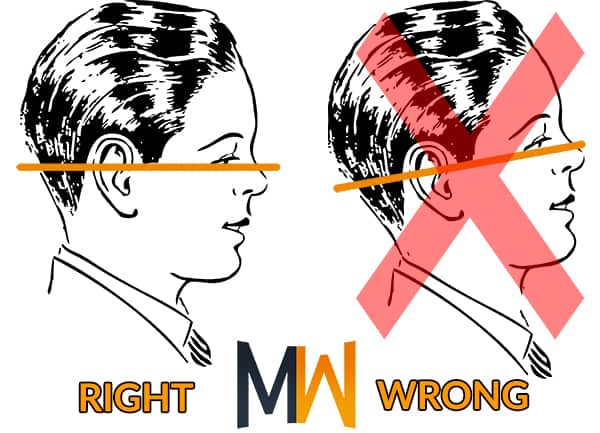
Conclusion
If you’re ugly, there’s hope. You can change your face. But it’s hard work and sacrifice. Bodybuilders put in years of work to improve their bodies. You can do the same with your face. Remember to use inanimate objects as memory triggers and to focus on getting the posterior third of your tongue up on the roof of your mouth. This is an insanely slow process, and the results will be slow. This discourages most people, and they will quit. But there’s plenty of evidence now that mewing works. Good luck!
While you mew, get the rest of your aesthetics on point. Work on your skin, hair, fitness, etc. These things have much more immediate and gratifying results.

